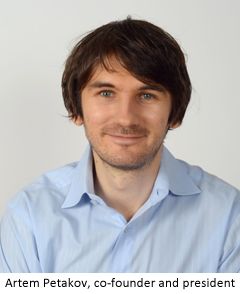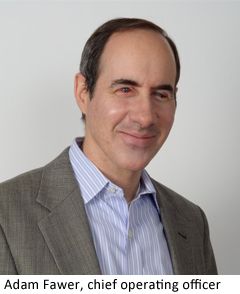- Center on Health Equity & Access
- Clinical
- Health Care Cost
- Health Care Delivery
- Insurance
- Policy
- Technology
- Value-Based Care
With Outcomes-Based Pricing, Noom Ties Its Fortunes to Participants' Success
Why a mobile health coaching company sees its move from per member per month to outcomes-based payment as the right thing-for employers and for consumers.
The last time I went to a gym in January, it didn’t go well.
For months, I had worked with a personal trainer—at $80 an hour—and battled mall traffic to barely make my weekly 6 p.m. appointment. Then New Year’s Day arrived, and I learned the hard way it would take another 10 minutes just to park the car.
By the second week of January, I arrived red-faced, furious that I’d lost $1.33 for every minute spent driving in circles.
Don’t worry, the trainer said with a smirk. In a month, half these people will be gone.
Appeased? Hardly. I nearly exploded at his admission: the gym’s business model didn’t just assume people would fail. It depended on failure. The calculus of gym memberships and parking spaces required some unknown share of these New Year’s hopefuls to disappear, but keep paying their fee.
It made me angry. And I’m not alone.
As American employers look for ways to cut healthcare costs, most have tried something to get their workers to adopt good habits—68% of companies with 200 employees had programs to help employees lose weight in 2016, and 32% offered incentives to take part.1 But that doesn’t mean employers are happy with these programs, or that they’re working. A 2015 article in The American Journal of Managed Care, led by wellness industry critic Alfred Lewis,2 argued that workplace weight loss programs should be scrapped because most workers don’t benefit.

Enter Noom, whose founders spent more than 7 years perfecting the technology and curriculum for a mobile health platform that combines artificial intelligence (AI) with human coaching, as well as support from like-minded peers. Noom’s co-founders, CEO Saeju Jeong, an entrepreneur, and President Artem Petakov, who worked at Google after earning a computer science degree from Princeton University,3 want to disrupt the healthcare market by taking aim at employer discontent.
“Most wellness programs are like most gym memberships,” Adam Fawer, Noom’s chief operating officer, said in an interview. Employers have spent lots of money on programs that fail to help or even reach most of the staff, he said. “They feel like they’ve been burned.”
The culprit is the per member per month (PMPM) payment model, which Fawer said initially appeals to companies because it’s predictable, despite a fundamental flaw: wellness providers make the most from employees who don’t participate, because they don’t generate any expenses.
“The incentives are completely misaligned,” Fawer explained. Under PMPM, “I would be excited about the client that I’m helping the least, because I’ll make money from that person. And I’ll be least excited about the client I’m helping the most.”
In early December, Noom unveiled a new payment model for employers: clients will only pay for staff who achieved “transformational” weight loss—at least 5% of their starting body weight—or who lowered their blood pressure or improved blood glucose levels, depending on their health condition.
The idea comes as wellness programs are at a crossroads. While the Affordable Care Act (ACA) encouraged employers to improve worker health, the concept has come under fire from both liberal and conservative critics.4,5 Lewis, of the Disease Management Purchasing Consortium, pulled 2015 data from the Population Health Alliance—which includes insurers and wellness providers—to argue that programs don’t provide meaningful return on investment.6,7
More pushback involved worker privacy. In May, the Equal Employment Opportunity Commission (EEOC) said companies that wrap wellness programs within a health plan must cap incentives at 30% of coverage costs. EEOC also barred incentives that demand disclosure of children’s health status or any genetic information.8

Noom’s model aligns with CMS’ plan to offer Medicare reimbursement for the Diabetes Prevention Program (DPP), starting January 1, 2018. 9 CMS wants at least part of DPP payments to be outcomes-based, although some people have asked whether traditional community providers can pull this off financially.10
Petakov said that Noom was hard at work on its curriculum before becoming aware of the possibilities that DPP offered, but the core program—which is also 16 weeks—was easily adjusted to meet recognition by CDC, which evaluates whether programs meet evidence-based standards. Noom also offers programs with core curricula that last 24 weeks for participants with higher-level medical needs.
Will it work? In the past year, an article on Noom’s results appeared in BMJ, showing that 56% of all who start the program and 64% of those who finish it achieve 5% weight loss, and most lose more.11 A larger study involving employees and clients of a major US health insurer is in the works, Fawer said. In the meantime, the new payment model is a hit with employers, he said.
“This pricing method has yielded such a positive reaction from our clients that we instantly knew we were on to something,” Dan Poch, Noom’s senior vice president of sales, said in statement.12
Underpinnings in Psychology
Petakov was still at Google when he was struck by the idea that technology and psychology could improve a basic experience: exercising. “I was working out with a personal trainer at the gym, and I realized how backward it was,” he said.
He could afford the trainer’s hourly rates, but that wasn’t the point. Petakov thought technology could do much of the trainer’s work less expensively. Of greater concern, he realized that the people who most needed help exercising could never afford a trainer. Out in the gym by themselves, he said, “There was no guidance at all.”
He discussed this with Jeong, who wanted to start a company right away. “What we failed to realize then was the gym was just the tip of the iceberg,” Petakov said. The fact that some people are completely sedentary and the “unhealthy food culture” begged for more complex solutions.
While Petakov majored in computer science, he also studied psychology under Princeton’s Daniel Kahneman, PhD, who won the 2002 Nobel Prize in Economics for his foundational work in understanding how people make decisions.13 With collaborator Amos Tversky, PhD—their friendship is the subject of Michael Lewis’ new book, The Undoing Project14—Kahneman showed how humans make plenty of irrational choices, based on perceived short-term rewards, even if the long-term results work against them.
Understanding the behavioral roots of unhealthy eating or lack of exercise is the key to Noom’s success, which has now reached 46 million users, the founders explained. “When people are eating bad food, like a donut or french fries, they know they are having it,” Jeong said. “There are much deeper reasons why they are having it.”
It’s taken more than 7 years to perfect the program, Petakov said, because the company took its time to fully develop and test the curriculum, and to build its own data tools, which track user behavior and evaluate the effectiveness of various coaching techniques.
Petakov uses an example of a person who falls into the habit of eating ice cream every night while watching television. Over time, the ritual becomes so ingrained that the person cannot watch television without the ice cream. Changing behavior in a sustainable way, he said, doesn’t start with telling the person he or she can’t have ice cream, because that will fail. Instead, it starts with suggesting that the person only eat ice cream at a dining room table, away from the television. Uncoupling the behaviors is the first step.

Similarly, if a user is going on vacation, Noom’s AI component and its human coaches won’t assume the person will avoid rich foods completely, but both will encourage a traveler who largely sticks with the food plan.
It’s why the health coaches at Noom may have backgrounds in nutrition or nursing, but the most important qualification is some background in psychology, Petakov said. Noom has an in-house program to train its staff through the National Consortium for the Credentialing of Health & Wellness Coaches,15 Fawer said.
The long road to today’s Noom, with coaches, its data collection systems, and its payment model gave its founders time to see the flaws in the way US healthcare generally and fitness, in particular, are priced and delivered. The data systems they’ve developed capture an entire case history, making it easier for more experienced health coaches to guide to newer ones. A typical electronic health record doesn’t do that; it captures clinical indicators, but it won’t measure the art of a nurse engaging a patient or her family.
The founders share stories of early ideas that didn’t fly, partly because they didn’t align with traditional profit streams that collect a monthly fee from people who may show up, but often do not. Jeong said one early project used sensors to make treadmills interactive and keep people on them longer. It tested well with users but did not excite gym owners. “They didn’t want it,” he said with a laugh.
Fawer, who joined Noom 3 years ago, said the founders’ commitment to long-term behavioral change—to really helping the users—attracted him. “Artem says, if you’re trying to lose weight there’s no magic bullet. You have to make changes over time in how you eat, that are sustainable over a lifetime.”
Aligned With Accountable Care
A visit to Noom’s Manhattan office is a step into a mindset. The front door opens into a high-ceiled cafeteria, where employees gather for a lunch of salads, vegetables, fruits, and plump berries. A chef prepares fresh tomato soup, and there’s not a soda in sight. There are conversations, not cubicles. No one eats at a desk.
On-site employees can choose from a traditional or standing work station, and there are enough vacant ones to let people change places during the day. Colorful, sound-proof “phone booths” afford privacy for calls at the edge of the open work space. One meeting room features small hand weights and yoga mats, plus a wood floor. Monitors allow remote workers to connect with their New York City-based counterparts during the day.

The layout speaks to anyone who reads recent studies that show communal meals are healthier,16 or that people should move every 30 minutes if they work long stretches at a computer. (That last recommendation just became part of the American Diabetes Association [ADA]'s 2017 Standards of Medical Care.)17
Noom’s focus (its slogan is “Changing your body starts with changing your brain”3) comes as both the ADA and CMS are shifting both emphasis and dollars to the behavioral side of chronic disease care. Change is in order, since the most expensive health system on Earth has created a nation where 2 out of 3 adults are overweight or obese,18 29 million have diabetes, and an estimated 86 million have prediabetes.19 Despite these numbers, Jeong is optimistic; he sees Medicare’s decision to fund DPP is the best signal yet that healthcare is moving toward prevention.
ADA’s November statement on psychosocial care, now part of the 2017 Standards, calls for better integration of mental health needs into diabetes care, especially by primary care providers,20 and the 2017 Medicare Physician Fee Schedule calls for funding collaborative care for the first time.21 Since the advent of the ACA, leaders in both accountable care organizations and in diabetes care have said that the key to reversing America’s epidemic of diabetes and obesity won’t happen within the doctor’s office, but will instead come when the medical system addresses behavior between visits,22 or as some put it, “when life happens.”23
It’s not that Americans don’t want to be healthy. A Nielsen survey suggests about 37% of Americans will make a New Year’s resolution to get fit and eat better.24
Noom’s leaders believe they can help. “We think of ourselves as being that middle layer, between the doctor and the healthcare establishment,” Petakov said. “We provide that supportive infrastructure the whole time.”
References
1. Kaiser Family Foundation. Employer Health Benefits Survey, 2016. https://kaiserfamilyfoundation.files.wordpress.com/2016/09/employer-health-benefits-2016-summary-of-findings.pdf. Published September 14, 2016. Accessed December 28, 2016.
2. Lewis A, Khanna V, Montrose S. Employers should disband employee weight control programs. Am J Manag Care. 2015;21(2):e91-e94.
3. Noom website. https://www.noom.com/about/. Accessed December 28, 2016.
4. Anderson LV. Workplace wellness programs are a sham. Slate. http://www.slate.com/articles/health_and_science/the_ladder/2016/09/workplace_wellness_programs_are_a_sham.html. September 1, 2016. Accessed December 27, 2016.
5. Bernard TS. The sticks and carrots of employee wellness programs. The New York Times website. http://www.nytimes.com/2015/10/31/your-money/the-sticks-and-carrots-of-employee-wellness-programs.html?_r=1. October 30, 2015. Accessed December 27, 2016.
6. Lewis A. Obamacare’s worst idea: support for wellness programs. CFO. http://ww2.cfo.com/health-benefits/2015/06/obamacares-worst-idea-support-wellness-programs/. Published June 3, 2015. Accessed December 27, 2016.
7. Health Enhancement Research Organization and Population Health Alliance. Program measurement and evaluation guide: core metrics for employee health measurement 2015. http://hero-health.org/wp-content/uploads/2015/02/HERO-PHA-Metrics-Guide-FINAL.pdf. Published 2015. Accessed December 27, 2016.
8. Hutchinson RA, Taylor JD. The EEOC’s new corporate wellness regulations. Baker Donelson website. http://www.bakerdonelson.com/The-EEOCs-New-Corporate-Wellness-Regulations. Published July 8, 2016. Accessed December 28, 2016.
9. Medicare Diabetes Prevention Program expansion [press release]. Washington, DC: CMS; July 7, 2016. https://www.cms.gov/Newsroom/MediaReleaseDatabase/Fact-sheets/2016-Fact-sheets-items/2016-07-07.html. Accessed July 7, 2016.
10. MacFarlane C, Kolb LE, Craver J. Updates from Medicare: comments to the 2017 Physician Fee Schedule. American Association of Diabetes Educators website. https://www.diabeteseducator.org/docs/default-source/practice/pfsresponse_aade_dsmt_mdpp.pdf?sfvrsn=20
BMJ Open Diab Res Care
11. Michaelides A, Raby C, Wood M, Farr K, Toro-Ramos T. Weight loss efficacy of a novel mobile Diabetes Prevention Program platform with human coaching. 2016;4:e000264 doi:10.1136/bmjdrc-2016-000264.
12. Noom’s new outcomes-based pricing model poised to disrupt healthcare market [press release]. New York, NY: PRNewswire; December 8, 2016. https://www.noom.com/in-the-news/2016/12/nooms-new-outcomes-based-pricing-model-poised-disrupt-healthcare-market/.
13. Daniel Kahneman, biography. Social Psychology Network website. http://kahneman.socialpsychology.org/. Updated February 23, 2009. Accessed December 29, 2016.
14. Denning S. How Kahneman won the Nobel Prize. Forbes. http://www.forbes.com/sites/stephaniedenning/2016/12/28/the-undoing-project-how-to-judge-a-book-by-its-cover/#7c08bc7767d9. Published December 28, 2016. Accessed December 29, 2016.
15. National Consortium for the Credentialing of Health and Wellness Coaches website. http://www.ncchwc.org/. Accessed December 29, 2016.
16. Boles RE, Gunnarsdottir T. Family meals protect against obesity: exploring the mechanisms. J Pediatr. 2015;166(2):220-221. doi: 10.1016/j.jpeds.2014.10.034.
17. American Diabetes Association. Standards of Medical Care in Diabetes--2017. [published online December 15, 2016]. Diabetes Care. 2017; 40(suppl1). S1-S135.
18. National Institutes of Health website. Overweight and obesity statistics. https://www.niddk.nih.gov/health-information/health-statistics/Pages/overweight-obesity-statistics.aspx. Accessed December 28, 2016.
19. Centers for Disease Control and Prevention. Diabetes Latest. CDC website. http://www.cdc.gov/features/diabetesfactsheet/ Updated June 17, 2014. Accessed September 15, 2016.
20. Young-Hyman D, de Groot M, Hill-Briggs F, et al. Psychosocial care for people with diabetes: a position statement from the American Diabetes Association. Diabetes Care. 2016; 39(12): 2126-2140. http://dx.doi.org/10.2337/dc16-2053.
21. Medicare finalizes substantial improvements that focus on primary care, mental health, and diabetes prevention [press release] Baltimore, MD: CMS newsroom; November 2, 2016. https://www.cms.gov/Newsroom/MediaReleaseDatabase/Press-releases/2016-Press-releases-items/2016-11-02.html.
22. Pearson TL. Diabetes and the patient-centered medical home. Am J Manag Care. 2013; 19(SP2): SP68-SP69.
23. Caffrey M. Telehealth in diabetes care: patient acceptance exceeds reimbursement. Am J Manag Care. 2016; 22(SP9):SP334.
Nielsen website. This year’s top new year’s resolution? Fitness. http://www.nielsen.com/us/en/insights/news/2015/2015s-top-new-years-resolution-fitness.html. Published January 8, 2015. Accessed December 28, 2016.
